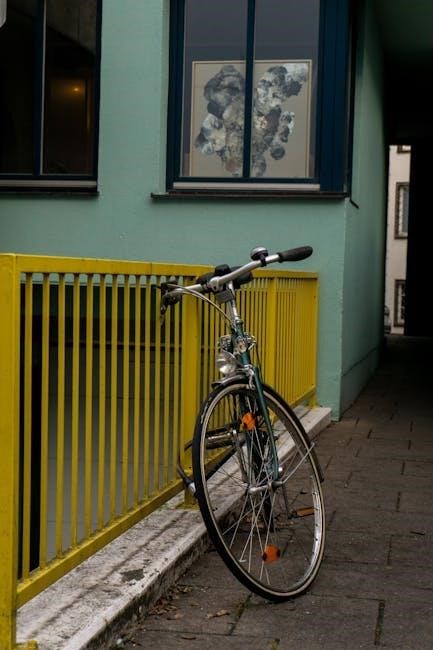
BOSS RC-1 Loop Station: A Comprehensive Guide
Welcome to the ultimate guide to the BOSS RC-1 Loop Station! This resource provides an in-depth look at maximizing the capabilities of this user-friendly looper․ From basic operation to advanced techniques, this guide is designed to help you explore the RC-1’s full potential․
The BOSS RC-1 Loop Station stands as a testament to user-friendly design in the world of looping pedals․ Emerging from BOSS’s legacy of innovative looping products that began with the RC-20 in 2001, the RC-1 prioritizes simplicity and affordability without compromising quality․ This compact stompbox allows guitarists and bassists to effortlessly record, playback, overdub, undo, and redo loops, offering a seamless entry into the world of creative looping․
Designed as a straightforward looper, the RC-1 presents an intuitive interface that appeals to both beginners and experienced musicians․ Its single-knob operation simplifies the looping process, making it accessible for on-the-fly experimentation․ Retaining the renowned BOSS quality and performance standards, the RC-1 provides a reliable platform for developing unique musical ideas and enhancing live performances․
Whether you’re practicing at home, composing new songs, or adding layers to your stage presence, the RC-1 offers a practical and inspiring tool․ Its ease of use encourages spontaneous creativity, allowing you to capture musical moments as they arise․ The RC-1 is more than just a looper; it’s an invitation to explore the endless possibilities of sound layering․
Key Features and Specifications of the RC-1
The BOSS RC-1 Loop Station boasts a range of features designed for optimal looping experience․ At its core, the RC-1 provides up to 12 minutes of stereo recording time, offering ample space to capture intricate musical phrases and layered compositions․ Its intuitive interface includes a unique loop indicator, visually displaying the current loop status, whether it’s recording, overdubbing, or playback․
Operating at a nominal input level of -20 dBu and an input impedance of 1 MΩ, the RC-1 ensures high-quality audio capture from various instruments․ The output stage mirrors these specifications with a nominal output level of -20 dBu and an output impedance․ These specifications guarantee pristine sound reproduction and compatibility with a wide range of amplifiers and audio systems․
The RC-1’s pedal-type recorder design makes it exceptionally easy to integrate into any pedalboard setup․ Its compact size and robust construction exemplify BOSS’s commitment to reliability and durability․ The RC-1 runs on a 9 V battery or an optional AC adapter, offering flexibility for studio and stage use․ Furthermore, its simple operation, combined with versatile features, establishes the RC-1 as a powerful tool for musicians seeking to explore the world of looping․
Understanding the RC-1 Controls: A Simple Interface
The BOSS RC-1 Loop Station distinguishes itself with its remarkably simple and intuitive interface, making it accessible to both novice and experienced loopers․ The pedal features a single, large knob that primarily controls the loop level, allowing for quick and precise adjustments to the volume of the recorded loop․ This knob is central to balancing the loop’s presence within the overall mix, ensuring seamless integration with live performance․
Complementing the level knob is the footswitch, the primary control element for all looping functions․ A single press of the footswitch initiates recording, while a subsequent press triggers overdubbing․ Pressing the footswitch again starts playback, creating a continuous loop․ The footswitch also provides access to undo/redo functionality: holding it down allows users to quickly remove or restore the last overdub layer․
The RC-1’s user-friendly design extends to its visual feedback system․ The unique loop indicator provides real-time information about the pedal’s current mode – recording, overdubbing, or playing․ This indicator visually simplifies the looping process, eliminating any guesswork and allowing musicians to focus entirely on their performance․ The RC-1’s design philosophy ensures that users can quickly master the art of looping without needing to navigate complex menus or controls․
Recording, Overdubbing, and Playback: Basic Operations
The core functionality of the BOSS RC-1 Loop Station revolves around three fundamental operations: recording, overdubbing, and playback․ Mastering these basic operations unlocks the creative potential of the RC-1, allowing users to construct complex musical arrangements with ease․ To begin recording, simply press the footswitch once․ The loop indicator will illuminate, signaling that the RC-1 is actively capturing audio․ The duration of the initial recording determines the length of the loop․
Once the footswitch is pressed again, the RC-1 seamlessly transitions into overdub mode․ In this mode, any new audio played is layered on top of the existing loop, creating richer and more textured soundscapes․ This process can be repeated multiple times, adding countless layers of instrumentation or vocals to the original loop․ Each overdub becomes a distinct element within the overall sonic tapestry, allowing for intricate and dynamic arrangements․
To initiate playback, press the footswitch a third time․ The RC-1 will then continuously play the recorded loop, including all overdubs․ The loop indicator provides visual confirmation of the playback status․ The volume of the loop can be adjusted using the level knob, ensuring a balanced mix with any live instrumentation․ These simple operations form the foundation of the RC-1’s looping capabilities․
Utilizing the Unique Loop Indicator
The BOSS RC-1 Loop Station boasts a distinctive loop indicator, a circular display that visually communicates the current operational mode and loop status․ This innovative feature sets the RC-1 apart, providing intuitive feedback during recording, overdubbing, and playback․ The indicator’s color and behavior dynamically change to reflect the pedal’s state, eliminating guesswork and enhancing user experience․

During recording, the loop indicator illuminates in red, clearly signaling that the RC-1 is actively capturing audio․ The circular display visually represents the progress of the recording, providing a real-time indication of the loop’s length․ As the recording nears its end, the indicator’s speed increases, alerting the user to complete the loop․ In overdub mode, the indicator shifts to green, signifying that new audio is being layered onto the existing loop․ The green illumination provides a visual cue, distinguishing overdubbing from the initial recording phase;
When the RC-1 is in playback mode, the loop indicator turns orange, confirming that the recorded loop is playing․ The orange glow provides a clear visual indication of the playback status․ Furthermore, the indicator’s responsiveness to tempo changes offers another layer of visual feedback, ensuring synchronization and control․ By understanding the loop indicator’s color-coded signals, users can confidently navigate the RC-1’s functions and create seamless, professional-sounding loops․
Exploring the 12 Minutes of Stereo Recording Time
The BOSS RC-1 Loop Station provides an impressive 12 minutes of stereo recording time, offering ample space for capturing intricate musical ideas and creating complex layered compositions․ This generous recording capacity empowers musicians to experiment with extended loops, elaborate arrangements, and dynamic sonic textures, all within a compact and user-friendly pedal․ Whether you’re building atmospheric soundscapes or crafting intricate rhythmic patterns, the RC-1’s 12 minutes of stereo recording time provides the freedom and flexibility to realize your creative vision․

With 12 minutes at your disposal, you can record multiple song sections, build extended improvisations, or create intricate backing tracks for solo performances․ The stereo recording capability ensures that your loops retain their sonic depth and spatial detail, preserving the nuances of your instrument or voice․ This feature is particularly valuable for capturing instruments with stereo outputs, such as keyboards or acoustic guitars with stereo microphone setups․
The extended recording time also allows for seamless transitions between different loop sections, enabling you to create dynamic and evolving musical arrangements․ You can easily record verses, choruses, bridges, and outros, and then seamlessly transition between them during live performances or studio sessions․ The RC-1’s 12 minutes of stereo recording time transforms it from a simple looping pedal into a powerful creative tool, capable of capturing and reproducing complex musical ideas with clarity and precision․
Connecting the RC-1: Input and Output Considerations
Proper connection of the BOSS RC-1 Loop Station is essential for optimal performance and signal flow․ The RC-1 features a standard mono input and output, designed to seamlessly integrate into your existing pedalboard or audio setup․ Understanding the input and output considerations will ensure a clean, noise-free signal and prevent any potential damage to your equipment․ For the input, use a standard instrument cable to connect your guitar, bass, or other instrument to the RC-1’s input jack․ Ensure the cable is securely plugged in to avoid signal loss or intermittent connections․
When connecting the output, use another instrument cable to connect the RC-1’s output jack to your amplifier, audio interface, or other downstream devices․ Again, ensure a secure connection․ The RC-1 has an input impedance of 1 MOhm and an output impedance designed to work well with a variety of amplifiers and audio interfaces․ Consider the impedance matching between the RC-1 and other devices in your signal chain to minimize signal degradation․
Experiment with different cable lengths and brands to find the optimal balance between signal quality and convenience․ High-quality cables can help reduce noise and interference, resulting in a cleaner and more defined sound․ If you are experiencing unwanted noise, try using shielded cables or a power conditioner to isolate the RC-1 from potential sources of interference․ Always use cables with a high build quality to ensure durability․
Powering the RC-1: Options and Precautions
The BOSS RC-1 Loop Station requires a stable and reliable power source to function correctly․ It can be powered by either a 9V battery or an AC adapter․ When using a battery, ensure it is a fresh alkaline battery to provide sufficient power for extended use․ A low battery can cause performance issues or unexpected shutdowns․ To install or replace the battery, remove the battery compartment cover on the rear of the pedal and insert the battery, ensuring the correct polarity․
Alternatively, you can use a PSA-series AC adapter, which is the recommended power source for consistent performance․ Using the wrong adapter can damage the pedal․ When connecting an AC adapter, make sure it meets the specifications outlined in the RC-1 manual, including the correct voltage and polarity․ Using an unapproved adapter could lead to malfunction or permanent damage to the pedal․
Always disconnect the power source when the RC-1 is not in use to conserve battery life or prevent potential damage from power surges․ Avoid using the RC-1 in environments with extreme temperatures or humidity, as this can affect its performance and lifespan․ Regularly inspect the power cables and connections for any signs of wear or damage, and replace them if necessary․ By following these precautions, you can ensure the RC-1 operates safely and reliably for years to come․
Troubleshooting Common Issues
Encountering issues with your BOSS RC-1 Loop Station can be frustrating, but many problems have simple solutions․ If you experience no sound output, first check all cable connections to ensure they are securely plugged in; Verify that your amplifier is turned on and the volume is at an audible level․ Also, confirm that the RC-1 is receiving power, either from a fresh battery or a functioning AC adapter․ If using a battery, replace it with a new one to rule out a power issue․
If the loop recording is distorted or has poor audio quality, check the input level of your instrument․ Adjust the input level to prevent clipping, which can cause distortion․ Ensure that you are using high-quality cables to minimize signal loss and interference․ If the pedal does not respond when you press the footswitch, try disconnecting and reconnecting the power source․
If you are still facing problems, consult the official BOSS RC-1 manual for detailed troubleshooting steps․ The manual provides specific guidance on resolving common issues and offers valuable insights into the pedal’s operation․ If these steps do not resolve the issue, consider contacting BOSS customer support for further assistance․ They can provide expert advice and help diagnose any underlying problems with your RC-1 Loop Station, ensuring you get back to creating music as quickly as possible․
Alternatives to the RC-1: Exploring Other Loopers
While the BOSS RC-1 is a fantastic entry-level looper, the market offers various alternatives that cater to different needs and preferences․ For those seeking more advanced features, the BOSS RC-3 provides expanded memory, allowing for longer recording times and multiple saved loops․ It also includes USB connectivity for easy file transfer and backup․ The TC Electronic Ditto Looper offers a similarly streamlined experience to the RC-1 but with a slightly smaller footprint․
If you require more complex looping capabilities, consider the Electro-Harmonix 720 Stereo Looper, which offers 12 minutes of stereo recording time and multiple loop slots․ For even more advanced options, the BOSS RC-5 and RC-10R provide features like rhythm tracks, MIDI control, and extensive memory․ These loopers are ideal for musicians who want to integrate looping into their live performances or songwriting processes․
Another alternative is the Line 6 DL4 MkII, which combines delay and looping functionalities, providing a versatile tool for creative sound design․ When choosing a looper, consider factors such as recording time, number of loop slots, ease of use, and connectivity options․ Each looper offers a unique set of features, so it’s essential to find one that aligns with your specific musical goals and workflow․ Exploring these alternatives can help you discover the perfect looper to enhance your creativity․
RC-1 Applications: From Practice to Performance
The BOSS RC-1 Loop Station is a versatile tool with applications ranging from personal practice to live performance․ For practice, it’s invaluable for developing timing, improvisational skills, and exploring harmonies․ Guitarists can record chord progressions and practice soloing over them, while vocalists can create layered harmonies and experiment with vocal arrangements․ The RC-1 also aids in songwriting by allowing musicians to quickly capture ideas and build song structures․
In a live setting, the RC-1 enables solo performers to create the sound of a full band by layering different instrumental parts․ Guitarists can loop rhythm sections and play lead lines over them, while vocalists can build complex vocal textures on the fly․ The RC-1 can also be used to create ambient soundscapes and experimental textures, adding depth and interest to performances․
Furthermore, the RC-1 can be integrated with other effects pedals to create unique and dynamic sounds․ Experimenting with different combinations of effects and loops can lead to exciting new sonic possibilities․ Whether you’re a beginner or an experienced musician, the RC-1 offers a wide range of applications to enhance your musical journey, from honing your skills in private to captivating audiences on stage․ Its simplicity and ease of use make it an essential tool for any musician looking to expand their creative horizons․

Accessing the Official BOSS RC-1 Manual (English)
User Reviews and Experiences
The BOSS RC-1 Loop Station has garnered a wide range of user reviews and experiences, reflecting its simplicity and versatility․ Many users praise its intuitive design, noting that it’s incredibly easy to pick up and start using, even without prior experience with loopers․ The single knob control and clear loop indicator are frequently cited as key features that contribute to its user-friendliness․
Guitarists often highlight the RC-1’s value as a practice tool, allowing them to create backing tracks for soloing and improvisation․ Vocalists appreciate its ability to create layered harmonies and experiment with vocal arrangements․ The 12 minutes of stereo recording time is generally considered sufficient for most looping applications․
Some users have noted that the RC-1’s simplicity can be both a strength and a limitation․ While its ease of use is a major advantage, more advanced users may find its feature set lacking compared to more complex loopers․ However, for beginners and those seeking a straightforward looping solution, the RC-1 is widely regarded as an excellent choice․ Overall, user reviews and experiences paint a picture of a reliable, user-friendly looper that’s well-suited for a variety of musical applications, from practice to performance․ Its robust build quality and BOSS reputation further contribute to its positive reception․
